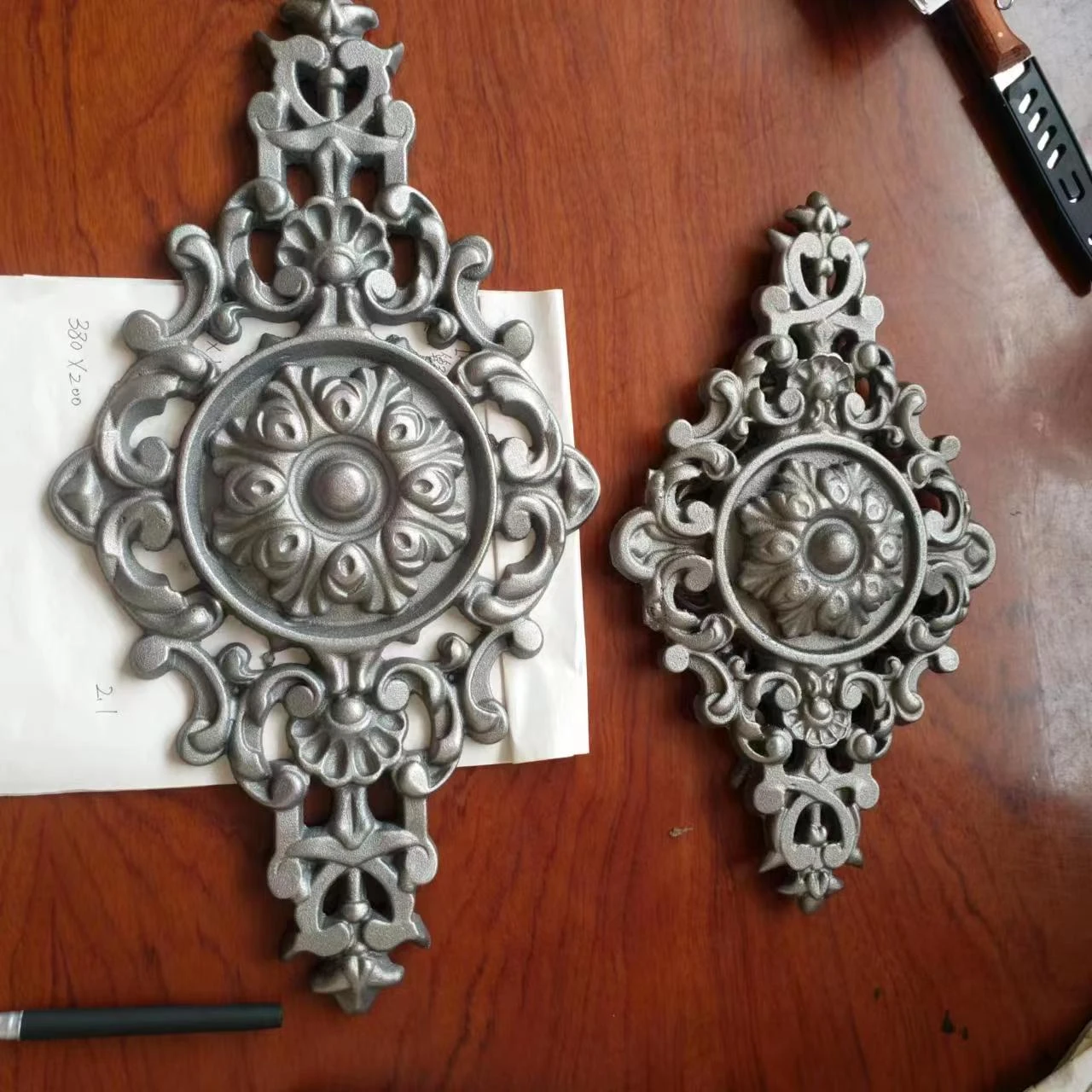Corrosion Processes in Wrought Iron Understanding Factors and Prevention Techniques
The Rusting of Wrought Iron A Historical and Chemical Perspective
Wrought iron has long been celebrated for its malleability, strength, and aesthetic appeal. Used since ancient times, it has been employed in everything from tools and weapons to architectural elements and decorative artworks. However, one of the challenges faced by wrought iron, like many metals, is the phenomenon of rusting. Understanding how wrought iron rusts, its implications, and the remedies available to combat corrosion sheds light on both historical and modern practices.
The Chemistry of Rusting
Rusting is an electrochemical process that primarily occurs in the presence of moisture and oxygen. For wrought iron, the chemical reaction can be summarized by the equation
\[ 4Fe + 3O_2 + 6H_2O \rightarrow 4Fe(OH)_3 \]
This equation illustrates how iron (Fe) reacts with oxygen (O₂) and water (H₂O) to produce iron(III) hydroxide, which eventually dehydrates to form rust, an iron oxide compound (Fe₂O₃·nH₂O). The rusting process is accelerated by the presence of salts and other impurities, making coastal areas particularly vulnerable due to saline conditions.
Historical Context
Historically, wrought iron has played a crucial role in the development of civilization. Its strength made it ideal for construction, from the monumental structures of ancient Rome to the railways of the 19th century. However, the issue of corrosion has always been a concern. In ancient times, engineers employed various methods to protect wrought iron, including paint and other coatings, although the science behind these methods was not well understood.
The knowledge of rust prevention advanced considerably during the Industrial Revolution, as the demand for durable materials surged. Engineers and architects began to experiment with different protective agencies to mitigate rusting. They discovered that certain coatings could form a barrier between the iron and the environment, effectively slowing the corrosion process.
rusting wrought iron

Modern Understanding and Solutions
Today, there is a more profound understanding of the chemistry behind rusting and new technologies that can help prevent it. Modern methods of preventing rust on wrought iron include galvanization—coating the iron with a layer of zinc, alloying with other metals, and the application of durable ceramic and polymer coatings. Each method has its benefits, with galvanization being particularly effective due to zinc’s sacrificial nature; it corrodes before the iron does, thereby prolonging the life of the wrought iron beneath.
Furthermore, advancements in rust inhibitors and smart coatings which can sense the onset of corrosion and react accordingly offer promising solutions for the future. These technologies not only address the rusting issue but also open doors for innovative applications in various industries, from construction to art restoration.
The Aesthetic Appeal of Wrought Iron
Despite the challenges of rusting, wrought iron remains a beloved material for its aesthetic qualities. The patina that forms from rust can add character and beauty to objects and structures, a feature often embraced by artists and designers. Additionally, the rustic charm of aged wrought iron is highly sought after in landscaping and architectural details, giving a sense of history and durability.
While rusting can compromise the integrity of wrought iron if unchecked, it is not an entirely negative phenomenon. It reminds us of the interplay between materials and the environment, an interaction that shapes the heritage and longevity of our creations.
Conclusion
The rusting of wrought iron is a multifaceted issue involving chemistry, history, and human ingenuity. From ancient protective methods to contemporary technological advancements, the battle against rust continues to evolve. Understanding the nature of rusting not only informs us about past practices but also guides future strategies in preserving this remarkable material for generations to come. As we continue to appreciate wrought iron for its beauty and resilience, confronting its vulnerabilities can transform a challenge into an opportunity for innovation.
-
Wrought Iron Components: Timeless Elegance and Structural StrengthNewsJul.28,2025
-
Window Hardware Essentials: Rollers, Handles, and Locking SolutionsNewsJul.28,2025
-
Small Agricultural Processing Machines: Corn Threshers, Cassava Chippers, Grain Peelers & Chaff CuttersNewsJul.28,2025
-
Sliding Rollers: Smooth, Silent, and Built to LastNewsJul.28,2025
-
Cast Iron Stoves: Timeless Heating with Modern EfficiencyNewsJul.28,2025
-
Cast Iron Pipe and Fitting: Durable, Fire-Resistant Solutions for Plumbing and DrainageNewsJul.28,2025
-
 Wrought Iron Components: Timeless Elegance and Structural StrengthJul-28-2025Wrought Iron Components: Timeless Elegance and Structural Strength
Wrought Iron Components: Timeless Elegance and Structural StrengthJul-28-2025Wrought Iron Components: Timeless Elegance and Structural Strength -
 Window Hardware Essentials: Rollers, Handles, and Locking SolutionsJul-28-2025Window Hardware Essentials: Rollers, Handles, and Locking Solutions
Window Hardware Essentials: Rollers, Handles, and Locking SolutionsJul-28-2025Window Hardware Essentials: Rollers, Handles, and Locking Solutions -
 Small Agricultural Processing Machines: Corn Threshers, Cassava Chippers, Grain Peelers & Chaff CuttersJul-28-2025Small Agricultural Processing Machines: Corn Threshers, Cassava Chippers, Grain Peelers & Chaff Cutters
Small Agricultural Processing Machines: Corn Threshers, Cassava Chippers, Grain Peelers & Chaff CuttersJul-28-2025Small Agricultural Processing Machines: Corn Threshers, Cassava Chippers, Grain Peelers & Chaff Cutters












